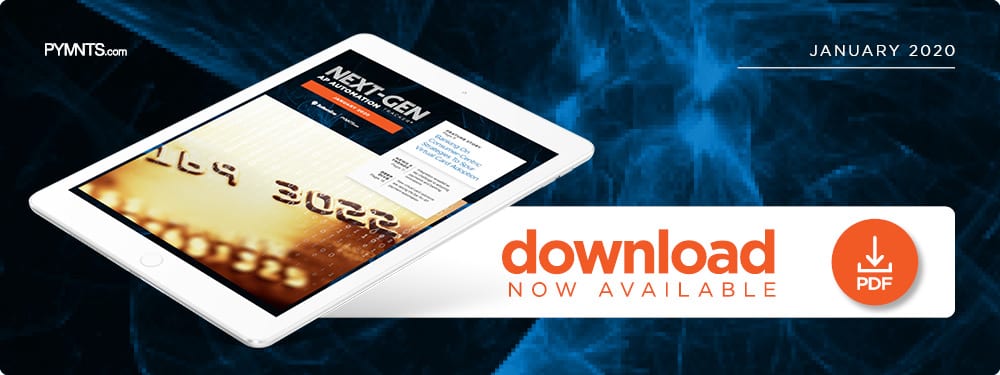Banking On Consumer-Centric Strategies To Spur Virtual Card Adoption

Flipping paper checks into virtual cards is easier said than done. In the latest Next-Gen AP Automation Tracker, Jennifer Swenson, U.S. Bank’s vice president of corporate payment systems, and Adam Kruis, senior vice president and manager of working capital consulting, share how using data to align customer needs with program parameters helps make the transition — and the decision to make it — easier.
Virtual cards have been spreading across the B2B payment space because of their cost-saving benefits for both companies and suppliers. These cards’ account numbers correspond with certain vendors, and have predetermined spending limits, enabling accounts payable (AP) professionals to better manage expenses, control cash flow and fight fraud. In addition, sending and receiving payments in a timely manner goes a long way toward tightening bonds between businesses and suppliers.
However, rolling out virtual cards in AP departments does have some challenges. Two officials from U.S. Bank — Jennifer Swenson, vice president of corporate payment systems, and Adam Kruis, senior vice president and manager of working capital consulting — addressed some of these concerns in a recent interview with PYMNTS. Swenson and Kruis explained the specific ways the bank alleviates these worries, why it is critical for the bank and its clients to work together on virtual solutions that meet all parties’ needs, and how some companies, including Apple and Uber, influenced the bank’s customer-centric approach to AP payment automation.
“It comes down to communication, and identifying those opportunities to work together to implement the technology that’ll benefit both sides,” Kruis said. “You must have input from stakeholders both inside and outside the organization.”
Identifying Key Areas For Virtual Card Expansion
Minneapolis-based U.S. Bank is the country’s third-largest commercial bank card issuer, and has offered its clients virtual accounts for more than 10 years. Its executives have said that its virtual card solution client base has been growing 22 percent annually, keeping pace with the industry. Many major banks now also issue virtual cards, and even third-party companies — such as Privacy — are entering the space.
Swenson explained that virtual cards are “extremely beneficial” in industries with high B2B transaction volumes and a need for real-time payments, such as commercial real estate and travel. Virtual cards can also help AP managers untangle their complex webs of suppliers, distributors and travel agencies. Such entanglements can cause turbulence for most business travelers, who must stay on top of every expense and follow their AP departments’ guidelines.
U.S. Bank became the first and only institution to push virtual cards into mobile wallets in May of 2019. The product, Expense Wizard, creates profiles and sets spending limits for employees at the beginning of their trips. It also generates expense reports in real time, and automatically submits them to AP departments when trips are over.
“What was once considered a solution for general payables spend is now being used for all purchase types, including employee travel expense,” Swenson said.
Firms use digital payment options for a myriad of reasons, and their AP teams most value speed and convenience. Fraud protection is also a high priority, according to a recent PYMNTS survey of AP professionals. Swenson added “revenue-share opportunity” to the list of key concerns, as it enables companies to realize substantial rebate revenues, depending on how often they use their virtual cards. Small businesses turn to automated solutions like virtual cards because they tend to be big users of corporate cards.
Cash control is also a benefit of virtual cards for AP professionals. The digital option allows them to better control how and when payments go out the door, enabling them to time cash flow, and take advantage of discounts and rebates. Kruis explained that this is a key tool for “turning AP into a profit center.” A recent report found that AP professionals think they can indeed drive more strategic value from their units.
Using Data Analytics To Speed Virtual Adoption
There are still hurdles to virtual card adoption, such as lingering attachment to paper checks. Many AP professionals want to employ automated payment methods, but are tied to legacy systems that revolve around outdated payment methods. Bottomline Technologies’ recent AFP survey found that 45 percent of AP professionals see integration as the biggest challenge to the adoption of payment and banking innovations. Swenson and Kruis stated that much of the responsibility for overcoming the adherence to checks falls on businesses and card issuers like U.S. Bank, which must educate clients and suppliers on the advantages offered by such technology.
Swenson added that it is important to get companies to prioritize virtual card implementation, and address vendor acceptance concerns.
“Advances in technology are helping to overcome both obstacles by reducing IT resource reliance during implementation, and by simplifying the vendor experience and adding more value for them,” she said.
Kruis explained that the bank has created “experience studios,” where the team works one on one with each client to weave its input into the development of new payment solutions. These discussions help both sides to quickly identify potential pain points in the business-supplier payment process, and the studios allow the financial institution to produce “proof of concepts for client approval in weeks, not years,” he said.
U.S. Bank finds inspiration from firms like Amazon, Apple and Uber, which have customer-centric approaches that set standards for the seamless experiences consumers expect, Kruis noted. These firms influenced his team when developing the experience studios, and further influence how companies approach B2B payment solutions.
Kruis added that AP automation is going beyond payments or invoice digitization. How companies automate the data that comes along with payments on the back end of their ERP systems is “driving who is becoming successful in payables automation,” he said.
Virtual card automation will not turn AP departments into profit centers overnight, and the technology is not entirely fraud-proof. However, U.S. Bank and other industry analysts stress that virtual cards can be a digital solution that keeps paying off when implemented correctly.

